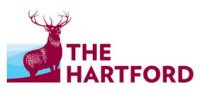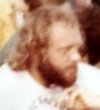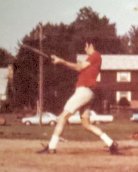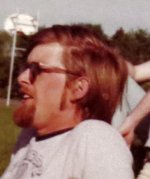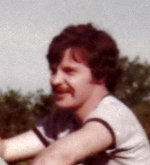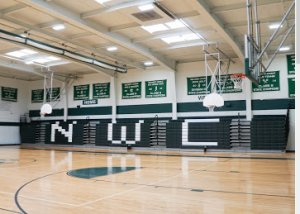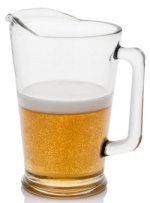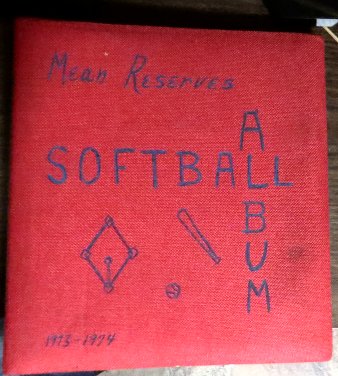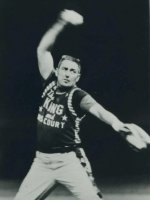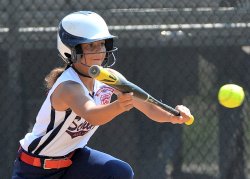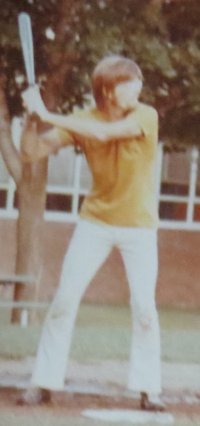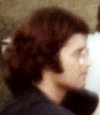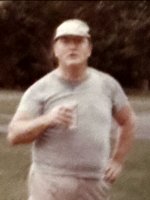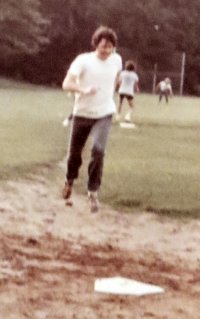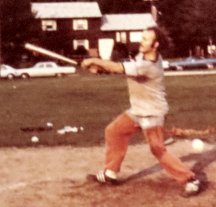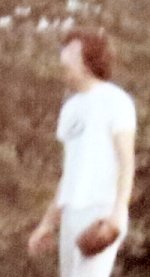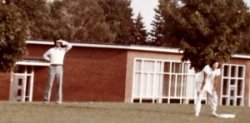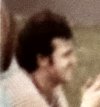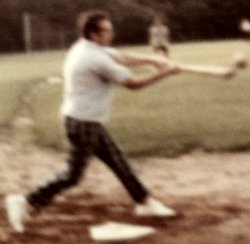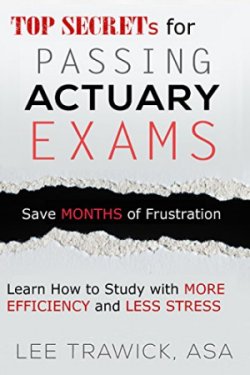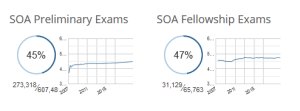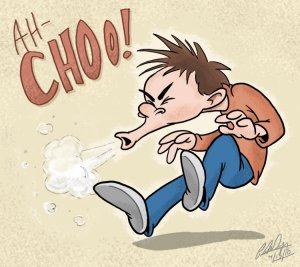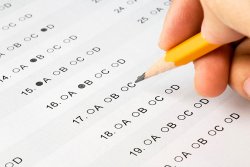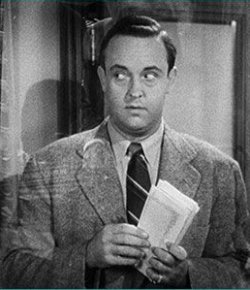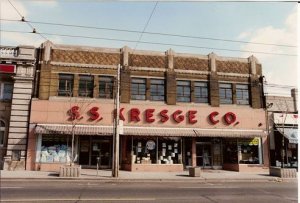Friends, memorable acquaintances, and relatives. Continue reading
I met a large number of people working at The Hartford. Here is an alphabetical list of the ones that I remember. At the end are a few people whom I remember only by first name. If no department is mentioned, the person worked in Life Actuarial. If no specific responsibility is mentioned, it is safe to assume that the individual was an actuary or actuarial student.
- The only think that I remember about Larry Abbott is that he always came to work without a suit coat. He kept a sports coat near his desk to wear to meetings in other departments. I think that he worked in Group Actuarial.
- I did not know Pat Adams very well. I remember criticizing her pitiful sneeze in the study room. I also remember that she took—and passed actuarial exams two at a time.
- Lou Aiello was a clerk in Life Actuarial. He might have worked for Alan Gibb. He batted .500 (1 for 2) for the Mean Reserves, and his hit was the most legendary in the history of the team.
- At some point I sat near Barb Bednarz. I think that it might have been when I came back for the summer of 1975. I remember talking to her about Monty Python and explicating my theory that a human being trained from birth to run on all fours could win Olympic medals.
- Paul Campbell arrived after I did. He was a Variable Annuity actuary. He played once or twice for the Mean Reserves softball team.
- Jim Cochran came to Hartford in 1973. He and his wife Ann were close friends. They taught me a subset of the rules to Sheepshead. Jim played on both Mean Reserves teams and took my place on the golf team. He was the outsider in the 345 Club carpool. I keep in touch with him via email. Some people called him “Crow”. I think it had something to do with the original spelling
- Tom Corcoran has been my close friend for over forty-eight years. Having grown up in the Boston area, in the seventies he still pronounced his last name in almost exactly the same way that Jim Cochran pronounced his. Tom, who participated in nearly every aspect of my life at the Hartford, married Patti Lewonczyk on 1/07/77.
- Sue Comparetto worked as a clerk for nearly every insurance company in Hartford. We got married on 12/08/12, when it finally made sense for tax purposes. She took the photos for the Mean Reserves softball album.
- Carolyn DesRochers was a supervisor in the Individual Pensions Department. I worked with her while attempting to determine the source of the problems with the annual reports for the policyholders. She was married to Chris.
- Chris DesRochers1 started, I think, a year before I did. I succeeded him in the role of preparing a monthly report for Jan Pollnow. He was married to Carolyn. I think that I helped them move.
- Paul Engstrom played both years for the Mean Reserves softball team, but I don’t have any clear memories of him.
- Wayne Foster ran the payday pool. He had been a communications specialist in Vietnam. He was awarded a Bronze Star for completing an international phone call.
- Don Francis was the #2 man in the Life Actuarial Department. He played softball with us a few times, but I did not know him very well.
- Tom Garabedian worked in the Group Actuarial Department. He was one of the best players in both basketball and softball.
- Paul Gewirtz was the senior actuary in the Individual Pensions area. I think that he became a fellow of the Society of Actuaries while I was at the Hartford. He made a memorable contribution to the lore of the Mean Reserves softball team.
- Alan Gibb was a supervisor in Life Actuarial. I did not have much interaction with him.
- My only contact with Bob Goode, a top executive, was a very nerve-wracking phone call during my short period working for Mike Winterfield.
- I am not sure where Les Gubkin worked. He somehow found out about the Mean Reserves and joined the softball team in 1973.
- Jim Hawke began working at the Hartford in 1973. We soon became close friends, and we still stay in contact by email. He played a little softball for the team, but he is most famous for the picnic with Ethan, Sue, and me on Bunyan Mountain. He also took over my bedroom in the 345 Club and my spot in the carpool.
- I remember Jim Housholder, but the only conversation that I recall clearly was when he explained about a new product he was working on—a whole life policy with a death-exclusion rider.
- Kevin Kirk worked in Individual Pensions. He and his wife came over to have supper and watch The Wizard of Oz with Sue and me in East Hartford. Kevin played on both the basketball and softball teams.
- Donna Kolakowski was one of the youngest clerks. She attended some of our events. I went to lunch with her and Jim Hawke a few times.
- Jim Kreidler once called me a jock, one of the greatest compliments that I ever received. He wimped out in the epic tennis match of 8/18/73. He went to England to work there.
- Patti Lewonczyk2 was a supervisor in Individual Pensions. We worked together on proposals. She married Tom Corcoran. They went on vacations with Sue and me in the twenty-first century.
- Frank Lord3 played on the softball team. He might have also played basketball, but his best sport was tennis. He was the first person that I knew who drove a BMW. I saw him in 1988 at the Mark Twain House when I won the story contest.
- I think that Mel Majocha worked at the Hartford somewhere. She went out with Tom Herget. I went to her parent’s house for a cookout once. I will never forget how she said goodbye to me.
- Dave McDonald was Secretary (boss) of the Individual Pensions Department. He asked me to investigate the problem producing the annual statements for customers.
- Gail Mertan went out with Tom Garabedian. I don’t know where (or if) she worked.
- Marsha Monico went out with Tom Herget. I don’t know where (or if) she worked.
- Bill Mustard played golf with John Sigler, Norm Newfield, and me. I think that he worked in IT at the Hartford.
- Norm Newfield was a tremendous athlete. He worked in Human Resources. He played on a flag football team in New Britain, and he participated in my football pool. He was part of our foursome in golf and an opponent in the golf league.
- Scott Otermat4 was my supervisor in the Individual Pensions Department. His favorite author was Ayn Rand. He had a dog named Cinders. I helped him move to Bristol. He liked to work on his MG. His full name was actually Scott C. Otermat, Jr. I tried to get him to promise to name his first-born Scott C. Otermat The Third so that his initials would be the same as his first name.
- Damon Panels lived across the street from the tower building. He occasionally gave a soirée in his apartment. Sue and I went to see him years later in Bloomfield, CT.
- Tony Piccerillo was a recent graduate of Trinity College who worked in Individual Pensions.
- Jan Pollnow hired me. He was a star play on both athletic teams. He was my last boss before I moved to Plymouth.
- Russ Pollnow was Jan’s brother. I don’t know where he worked but he played on the 1974 softball team.
- Parker Prine worked with Norm Newfield in Human Rellations. He played in the football pool and won one week. Tom Herget accused me of making him up and keeping the winnings for myself.
- Ann Randazzo was Don Sondergeld’s secretary and the unofficial office manager of the Life Actuarial Department.
- I don’t know where Keith Reynolds worked. He played softball and went to bars with us.
- Bob Riley was a supervisor in Life Actuarial. He was Sue’s boss and a first baseman on the 1974 team.
- I don’t know where Charlie Robinson worked. He played on the softball team.
- David Rowe was an exchange student from England who worked as an actuary in Life Actuarial. The four bases on a softball diamond confounded him. Traffic on roundabouts in England goes clockwise.
- Gerry Schwartz, an employee of the Operations Research Department, had the dubious honor of managing the HP-3000 computer system.
- John Sigler was my golf and tennis partner. He also played on all of the Mean Reserves teams.
- Fred Smith played on the basketball teams. He was famous for being able to read paper tapes.
- Don Sondergeld was VP and Actuary (big cheese). He never berated me publicly for insulting his wife. In 2021 he is still an active member of the Hartford Bridge Club.
- Mike Swiecicki5 left the Hartford before I did. I remember him as being a phenomenal player at games that required hand-eye coordination.
- Laurie Weisbrot (a guy) worked in Group Actuarial. When he passed the tenth exam he purchase a vanity plate: LRW-FSA.
- Mike Wheeler played on the softball team both years.
- Jo White was a senior clerk. She played a lot of golf, mostly at the Buena Vista Golf Course in West Hartford.
- Ron Wittenwyler played third base on our softball team in 1973. His wife Jane came to some games.
- First names only:
- Bill: Norm Newfield’s partner in the golf league;
- Jackie: Sue’s landlady in Rockville;
- Lisa: who worked for Don Francis;
- Paula: a clerk who worked for Patti Lewonczyk and whom I made cry;
- Ray: a supervisor in Individual Pensions;
- Ron: who married Jackie.
- Tad: a clerk who worked for Alan Gibb.
Sue Comparetto had a million friends. I have undoubtedly forgotten more than I remember. Here are a few that I met during this two-year period.
- Marlene Boulerice was with Gary Gudinkas at the time. Sue went to high school with her.
- Diane DeFreitas was Sue’s roommate in East Haddam.
- Gary Gudinkas was a short guy who was with Marlene. Sue knew him from high school.
- Karen Peterson worked at Travelers Equity Sales with Sue and went on the trip to Alaska with her.
- Diane Robinson6 worked at Travelers Equity Sales with Sue and went on the trip to Alaska with her. We visited Diane a few times at her home in Vermont.
- Pat and Stan Slatt had a very large python and a boa constrictor.
- Bob and Susan Thompson had a dachshund and a very old Plymouth.
- Sue knew Evelyn Umgelter from high school.
It took me years to sort out Sue’s relatives on her mother’s side. I’m only listing first names. Except for Effy, their last name in 1972-74 was Locke. Almost all of them lived within a mile or two of Sue’s childhood home on North Maple in Enfield. Sue was older than all of her cousins and siblings, and I was older than she was. So, I am pretty sure that all of the people of Sue’s generation were living at home during this period.
- Bob was the only one of Effy’s brother who left Enfield. He moved to western Michigan and worked as an engineer. Sue and I visited his family in the nineties.
- Carol7 was Bob’s wife.
- Charlie8 was Effy’s brother. He was an electrician who did work for Sue’s Father. He lived within a couple of miles.
- Chet9 was also Effy’s brother. He was buried in his military uniform. He lived within a couple of miles.
- Effy Slanetz10 was Sue’s mother.
- Elsie11 was Chet’s wife.
- Gene12 was Charlie’s wife.
- Glenn was a son of Ted and Judy and therefore Sue’s first cousin. He lived a few miles away in a new house
- Jimmy was a son of Ted and Judy and therefore Sue’s first cousin.
- Judy was Ted’s wife. They lived across the street from the Slanetz home.
- Molly13 was Sue’s Grandmother and Effy’s mother. She lived in a room attached to Ted and Judy’s house. She loved to play bingo.
- Paul was Chet’s son. a grave-digger, and Sue’s first cousin.
- Patti14 and Cathy were Charlie’s daughters and therefore Sue’s first cousins. I did not know them very well.
- Susie was Ted and Judy’s daughter and Sue’s first cousin.
- Ted was Effy’s youngest brother and therefore Sue’s uncle.
- Timmy was Chet’s son and Sue’s first cousin.
In contrast, I am not sure that I met any of Sue’s uncles, aunts, and cousins on her father’s (Slanetz) side during this period. I got to meet a lot of them at a Slanetz family reunion that was held years later at Sue’s family house.
- Art15 was Sue’s dad. He farmed when Sue was little. When I knew him, he had a corporation with several irons in the fire—construction, trash, water, and who knows what else.
- Betty was Sue’s youngest sister.
- Don was Sue’s only brother.
- Karen was Sue’s younger sister. She was older than Betty and Don.
- Margaret16 Davis was Art’s sister. She had three children.
- Mark was the brains of the family. I saw him once in Houston, and he has visited our house occasionally.
- Robby still lives in Enfield in 2021.
- I met Diane only briefly. I think that she in South Carolina in 2021.
- Chris DesRochers died in 2013. His obituary can be read here.
- Patti and Tom Corcoran married while I was coaching debate in Michigan in the late seventies. They had two children, Brian and Casey, who in 2021 both live in Burlington, VT, with their respective families. Patti died in 2011. My tribute to her can be read here.
- Frank Lord died on July 3, 2020. His obituary is here.
- Scott Otermat left the Hartford in 1980. He died in 2016. His obituary is here.
- Mike Swiecicki left the Hartford before I did. He died in 2015 after a twenty-five year career as an actuary with CAL PERS. His obituary is here.
- Diane Robinson died in 2009
- Carol Locke died in 2018. Her obituary is here.
- Charlie Locke died in 2017. His obituary is here.
- Chet Locke died in 2004. His obituary is here.
- Elsie Locke died in 2018.
- Effy Slanetz died in 2002. Her obituary is here.
- Gene Locke died in 2018.
- I think that Molly Locke died in 1990.
- Patti Locke Caswell died in 2019. Her obituary is here.
- Art Slanetz died in 2017. His obituary is here.
- Margaret Davis died in 2010. Her obituary is here.

